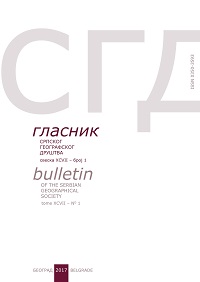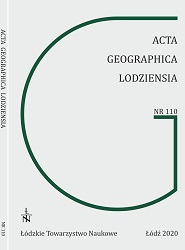Author(s): Igor Jelinić,Nada Horvatinčić,Vlado Božić / Language(s): Croatian
Issue: 1/2001
Lomska duliba is a glacier valley with WNW-ESE strike and is located between Veliki Rajinac to the north and Hajdučki kukovi to the south of Mt. Velebit. The entrance to Ledena jama Ice Pit) is situated on the most eastern part of this one kilometre long valley at the level of 1235 above the sea. Ledena jama, just as most pits located on the northern part of Velebit, has a rather simple morphology. Nevertheless, its simplicity is in inverse proportion with the speed and simplicity of exploration, which makes it very different in comparison with other deep pits in this part of Velebit. consider today, it takes three hours for a coordinated team of three speleologists to reach the bottom, the complexity and duration of its investigation in the past is surprising. The complexity the performed investigation makes the story of Ledena jama in Lomska duliba much more interesting. The initial investigations were performed by the members of the Croatian speleological society in 1962. Further investigations were continued in 1977, when a team of speleologists from Željezničar" mapped the pit to the depth of-50 m. The floor of the pit was covered by a thick
Since the Croatian speleologists considered they had definitely reached pit's bottom, no further investigations were performed. During the summer of 1992, a team of Slovakian speleogists visited the pit, found a hole in ice and descended through it to the depth of-90 m. Since the pit extended further, the following the investigations continued with the participation of both Slovak and Croatian speleologists. During 1993 and 1994 investigations were performed in combination with the investigators of Lukina jama (-1392 m). In the period between 1995 and 1997 further investigations were undertaken the pit by widening the passage at 473 m and by reaching the bottom of the pit at the depth of-536 m. On the 29th June 1997 during a sport tour of the pit occurred one of the most serious accidents in the Craotian speleology. At the depth of 160 m a landslide of rock and ice caused severe injuries (multiple fracture of various limbs and bones and also muscle ruptures) to B. Bukovčak, who was hanging on the rope. The rescue of the injured speleologists was performed by members of his team and by the Mountain Rescue Service from Karlovac. After a long-lasting recovery, B. Bukovčak is an active speleologist again. In the summer of 1993 it was determined that there was a passage between the ice and the north wall of the pit wide enough for a person to pass. This led to a discovery of an ice plug twenty meters in diameter, well bedded and 40 m thick. Several branches were found to be peeking out of the ice. There was a possibility that the ice originated from the Ice Age, since the Lomska duliba was formed by a glacier. So, speleologists in agreement with the scientists from the Institute Ruder Bošković in Zagreb collected some samples of ice, branches and speleothems for dating. The results of analysis were surpassing. Dating with radioactive isotopes tritium (3H), carbon (14C) and thorium and uranium (230Th/234U) gave an approximate age of ice of 500 years. Said age indicated that the samplings of ice were badly performed (contaminated by more recent waters) or that larger temperature variations existed on Velebit, which should be confirmed by other methods. The branches were younger, which means that they fell into the crack and froze. The most surprising was the age of the speleothem from the depth of 60 m, which was estimated at 300.000 years. This is the oldest registered age of Speleothems measured in Croatia so far although by method not used before on speleothems from other caves and pits. In order to determine the age of this largest piece of old ice in Croatia and speleothems from this pit and other caves and pits, further investigations with modern methods would be required in the future.
More...











